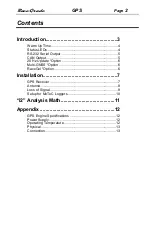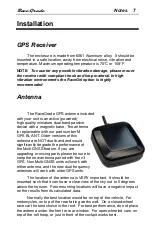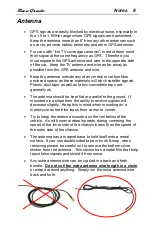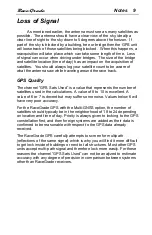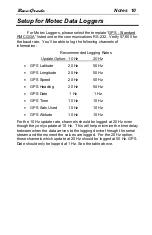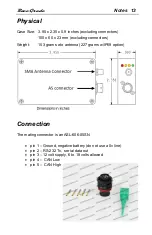
RaceGrade
Notes
9
Loss of Signal
As mentioned earlier, the antenna must see as many satellites as
possible. The antenna should have a clear view of the sky, ideally a
clear line of sight to the sky down to 5 degrees above the horizon. If
part of the sky is blocked by a building, tree or bridge then the GPS unit
will loose track of those satellites being blocked. When this happens, a
reacquisition will take place which can take some length of time. Loss
of signal can occur when driving under bridges. The size of the bridge
and satellite location (time of day) has an impact on the acquisition of
satellites. You should always log your satellite count to be aware of
what the antenna saw while traveling around the race track.
GPS Quality
The channel “GPS Sats Used” is a value that represents the number of
satellites used in the calculations. A value of 8 to 10 is excellent. A
value of 6 or 7 is decent but may suffer some noise. Values below 6 will
have very poor accuracy.
For the RaceGrade GPS with the Multi-GNSS option, the number of
satellites should typically be in the neighborhood of 18 to 24 depending
on location and time of day. Prioity is always given to locking to the GPS
constellation first, and then foreign systems are added as their data is
confirmed to be reasonable with respect to the GPS data already
received.
The RaceGrade GPS carefully attempts to screen for multipath
(reflections of the same signal) which is why you will find it more difficult
to get lock inside of buildings or next to tall structures. Most other GPS
units accept multi-path signal and therefore lock more easily. For these
reasons
the channel “GPS Sats Used” can not be analyzed to estimate
accuracy with any degree of precision in comparison between systems
other than RaceGrade receivers.



